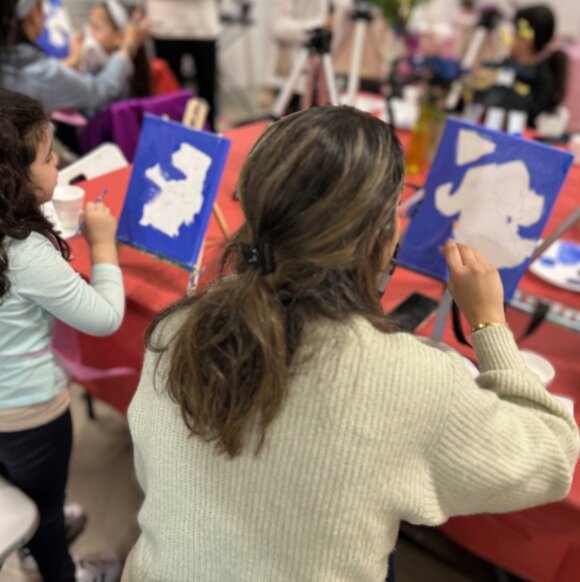Benefits of Therapeutic Art on the Overall Wellbeing
The term “Therapeutic Art” refers to a wide variety of art-based activities that are used to promote healing, growth, and well-being. It is rooted in the belief that creative expression can be a powerful tool for self-discovery, emotional processing, and psychological transformation.
Therapeutic art can take various forms, such as painting, drawing, sculpture, collage, photography, journaling, and even performing arts like music, dance, and drama.
The focus in this process is not on creating a masterpiece or achieving artistic perfection, but rather on the process of engaging with the materials, exploring one's inner experiences, and finding personal meaning through creative expression.
History Of Art Therapy
Art therapy is a healing technique that has been used since the 1940s in Europe. It is generally believed that Adrian Hill, a British artist, coined the term "art therapy" during that time.
Although it is believed that this technique has been put into practice for longer than that, only in the mid-1900s were art and healthcare combined in a formal therapeutic setting to become known as art therapy.
How Does Art Therapy Work?
Art therapy involves the use of art-making techniques and processes under the guidance of a trained art therapist. In art therapy sessions, individuals work with the art therapist to explore their thoughts, feelings, and experiences using different art materials and methods. The art therapist provides a supportive and non-judgmental environment, facilitating the individual's self-expression and helping them make connections between their artwork and their inner world.
However, therapeutic art is not limited to formal art therapy sessions. Many individuals engage in art-making activities on their own as a form of self-care and personal growth. They may create art as a means of relaxation, emotional release, or self-exploration. The process of engaging in art-making itself can be therapeutic, regardless of whether it is guided by a therapist or pursued independently.
How Can Art Improve Health?
The purpose of therapeutic art is to promote psychological well-being, self-awareness, and empowerment through the creative process. This concept acknowledges the connection between our thoughts, feelings, and body and recognizes the natural healing power of art as a means of expression. Engaging in creative activities empowers individuals to tap into their natural creativity, connect with their inner wisdom, and discover new ways to cope with their emotions, challenges, and life experiences.
Overall, therapeutic art provides a comprehensive approach to well-being, integrating the therapeutic benefits of art-making with psychological insights and self-reflection. It offers individuals a unique and personal pathway to explore, heal, and enhance their overall sense of well-being.
Benefits Of Art Therapy
Emotional expression and release: Therapeutic art provides a safe and non-verbal outlet for individuals to express and process their emotions.
Stress reduction and relaxation: Creating art can act as a form of mindfulness, helping individuals to focus on the present moment and divert their attention from stressors, thus promoting a sense of calmness and inner peace.
Self-discovery and self-awareness: Through the process of creating art, individuals can explore their thoughts, feelings, and experiences.
Enhanced self-esteem and self-confidence: Engaging in artistic activities and witnessing personal progress can boost self-esteem and self-confidence.
Improved communication and interpersonal skills: Art can serve as a bridge for communication, particularly for individuals who struggle with verbal expression. Through art, individuals can communicate their thoughts, feelings, and experiences to others, facilitating better interpersonal connections and understanding.
Cognitive stimulation and problem-solving: The process of creating art requires planning, making decisions, and experimenting, which stimulates neural connections and promotes cognitive flexibility and flexibility.
Emotional resilience and coping skills: Art-making helps individuals externalize and process difficult emotions, allowing them to develop healthy coping mechanisms and lessen the impact of emotional challenges.
Social support and a sense of community: Taking part in art groups, workshops, or therapy sessions allows individuals to connect with others who share similar interests and experiences.
Improves overall health: Art-making alleviates pain symptoms for cancer patients, improves behavior in autistic children, stimulates mental function in older adults with dementia, and diminishes depression in Parkinson's patients.
Therapeutic Art as a Complementary Approach to Well-being
Therapeutic art should be viewed as a complementary addition to professional mental health treatment, rather than a replacement. While it is not a standalone solution, it can greatly contribute to overall well-being and is valued by many individuals as part of their self-care routine.
In fact, Mollaoglu and colleagues, in their book "Art Therapy with the Extent Health Promotion," propose integrating art therapy into health promotion initiatives and recovery from illnesses to maximize its benefits.
According to Michigan State University Extension, physical, mental, emotional, social, and environmental aspects are integral to human health and both mental and physical health can be benefited by art therapy.



